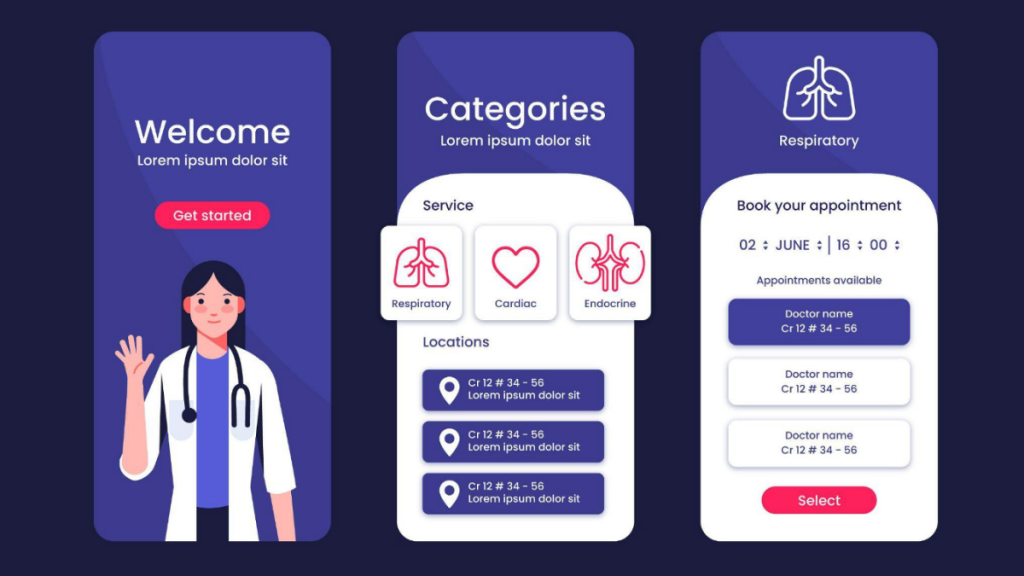Digital technologies have spread to almost all areas, and healthcare is no exception. Innovative technologies are used in clinics, hospitals, and diagnostic centers. However, such a wide distribution entails greater vulnerability of medical care because many diagnoses are made based on data provided by electronic devices.
Introductory information
Contents
Since healthcare applications must function smoothly and produce only the correct results, it is through quality testing that a healthcare application can work effectively and correctly. It is worthwhile to imagine the consequences of medications incorrectly prescribed by a doctor to a patient based on incorrect data from a medical application. Therefore, testing of healthcare applications is not only mandatory but also extremely strict in terms of its high quality and compliance with regulatory requirements (e.g., HIPPA).
Moreover, access to the global Internet via a smartphone computerized healthcare applications. This opportunity facilitates the prompt receipt of various information, allowing you to optimize medical document flow and make timely decisions. Also, using medical applications, it becomes possible to monitor the condition of patients remotely. All these capabilities make healthcare applications essential.
Despite the many benefits (monitoring, communication, diagnostics, etc.) of using medical applications, there are potential problems associated with application management, security, and usability. Therefore, these problems should be resolved through real practical testing.
Today, the best practice is to turn to a specialized team of testers who know all the pitfalls in testing medical mobile applications: https://testfort.com/healthcare-software-testing.
All aspects of testing
The testing process is a complex and complex process during which it is necessary to check all parts of the created product and the software as a whole.
Let’s list what testers need to take into account when checking developed products:
● Ensuring a high degree of security, excluding the possibility of intruders entering the system;
● Third-party software must be subjected to quality testing to detect errors, weaknesses, and synchronization capabilities;
● It is essential to consider the convenient and understandable use of the application, which does not require prior training;
● Products must meet the requirements of various regulations and standards;
● Access to the system must also be checked, as different stakeholders will have additional responsibilities and positions. For example, a pharmacist should not have access to the category used by doctors;
● It is necessary to test the user’s status and provide notifications;
● Testing performance and functionality in different browsers and operating systems – this can be done through various test scenarios involving many combinations of an electronic device with an operating system;
● After completing all sections, the fully developed software is tested, particularly ensuring the operation of all processes.
If all of the above is considered, the medical application will be high quality, reliable, and in demand among healthcare workers and patients.
Main challenges in the process of testing developed products
If we consider the existence of various operating systems, programming platforms, and types of electronic devices used, testers may encounter the following obstacles.
1. Compliance check
Medical device developers must strictly adhere to regulatory requirements, standards, and certifications (HL7, HIPAA, CCD/CDA, ICD10). Therefore, QA specialists must undergo training on applying these requirements regularly and strictly follow them, ensuring product quality.
Particular attention should be paid on HIPAA requirements for software because you won’t be able to work legally without this in the relevant country.
2. Security
High-level security compliance testing is a significant aspect when creating a healthcare mobile app. Product software should not be vulnerable to cyber-attacks and virus programs. Such negative external influences can significantly harm product performance and patients’ lives.
A hacker who has penetrated the system can falsify confidential information or disrupt the correct operation of the system. Therefore, to test security, it is necessary to provide stringent criteria to prevent cyber-attacks to avoid penetration by eliminating software weaknesses.
3. Database integrity
With medical management systems in the cloud and healthcare organizations owning vast amounts of data to provide high-quality information, testers use virtualization to ensure efficient results. Quality engineers must have the relevant domain knowledge to test the dashboard, various reports, and all data to ensure they meet the requirements for medical applications. In addition, it is necessary to encrypt the data to prevent violation of its integrity securely.
4. Usability challenges
Ensuring the usability of healthcare apps is crucial. Especially considering that users range from tech-savvy doctors to elderly patients with minimal technical experience. Usability testing should take into account different user groups. This is to ensure that the app is intuitive, accessible to all, and obvious to use. Poor usability can lead to navigation errors by users. This can compromise patient care and health.
5. Mobile device testing
With the increased popularity of gadgets and the convenient use of healthcare apps, stakeholders in the field will use them in large numbers. Everyone involved in the healthcare industry and patients will use medical applications to provide access to information, monitoring, diagnosis, and much more.
Because there are a lot of different mobile devices and the software is systematically updated, there will be many problems for testers related to these aspects. It is important to note that any healthcare application must be tested on three operating systems: Windows, Android, and iOS.
Conclusion
Testing healthcare applications is an integral part of product development but it is also not too late to implement a testing process for the existing product, since it is never too late to think about quality and safety. In addition, the audit might include all types of testing at each stage, considering the required standards and regulations. A reliable and high-quality application will attract more users, provide quality medical care and promptly provide the necessary information. And all internal information about users will remain safe.

